Schiit Aegir 2
All Hail this new improved Aegir Amplifier
In this review, I will delve into the details of the newly upgraded Schiit Aegir 2:
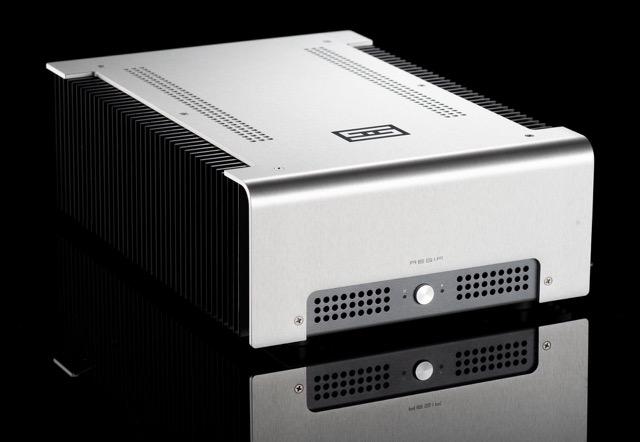
Why use a ‘Class A’ Amplifier
Class A amplifiers are renowned for their exceptional audio quality. I remember reading a review of the original Schiit Aegir by Amir over at Audio Science Review and being highly impressed by the measurements, but especially with this rather ‘boring looking’ Frequency Response graph.
 Being absolutely flat from 10Hz to 20Khz, means you get perfect amplification of your source material with no
‘colouring’ of the sound either intentional (like a tube Amp) or a side effect of technology choices (like class D
amplifers):
Being absolutely flat from 10Hz to 20Khz, means you get perfect amplification of your source material with no
‘colouring’ of the sound either intentional (like a tube Amp) or a side effect of technology choices (like class D
amplifers):
This perfection is why people will always appreciate Class A amplifier despite some power and heat side effects that class A technology brings with it.
So, when I spotted that Schiit had quietly introduced an upgraded Aegir 2 with some new technology and design upgrades to specifically mitigate against these side effects and future enhance the sound quality I was intrigued.
I would like to thank Schiit for providing the Aegir 2 for the purposes of this review - if you are interested in more information about the Aegir 2 including a detailed technical Report check out their product page: here
Having mainly used Class AB amplifiers from likes of Yamaha, Cambridge Audio and Denon for many years in my main listening space and more recently “playing” with some Class D amplifiers (mainly from China from companies like Fosi Audio) in my converted garage “work from home” space, I was thrilled with opportunity to test out the new Schiit Aegir 2 Class A amplifier.
I will admit upfront I am a fan of Schiit for a few reasons (beyond their audio excellence) - I love instantly recognisable consistent brand design, they have a great sense of humour, and they approach designing their products in a very different way than just about every other audio company. While they might not like this comparison I do feel with the ‘Designed in California’ ethos and their ’think differently’ attitude to audio, they remind me of the Steve Jobs era Apple.
What to Expect in the Box
Unboxing the Aegir 2, users will find the amplifier itself, housed in a very environmentally friendly packaging:

Included are the power cable, a user manual detailing installation and operation guidelines for both the Aegir and the Vidar.
Removing the packaging reveals the lovely design of the Aegir 2:
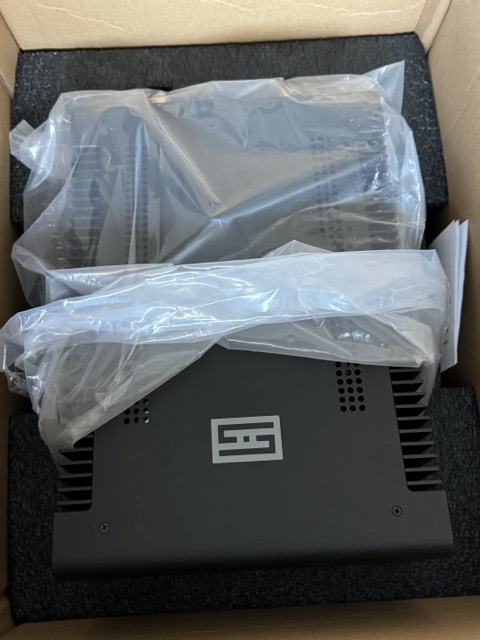

I was immediately struck by the texture of the metal finish which these pictures do not do justice too:

Ampflier Design
Let get into the details - first with the external design:
Weight and Size
Lifting the Aegir 2 out of its box you are immediately with it’s weight and the size - this is
not a small amplifier - you should plan where you are going to put it beforehand as you will not
want to be moving it around allot especially if you get 2 and use them as classic monoblocks instead of as power
amplifier.

The majority of the weight comes from the quality metal ‘heat sink’ construction and the design to dissipate heat from
the unit:

I love the quality machine work done of this amplifier - you can get a brief view of the internals through the
precisely drilled holes on the top. This design also provides a nice warm red glow when the unit is running:

Minimum buttons on the front
For those who like minimal of fuss the front of the Aegir 2 follows exactly the same design as the Aegir:

There is basically one button where you can toggle whether the Aegir 2 goes into standby of not and 2 separate lights. The one on the right indicates that the amplifier is in standy (and flashes when it is warming up) and one of the right lights up with the Amplifier is ready to play music.
Note: When comparing with a class D Mono-blocks which start immediately, it can be off-putting to have to wait while the ‘self-checks’ complete and the amplifier ‘warms up’ but you quickly get used to it, you will hardly notice this little delay on startup.
Connections on the back
The Aegir 2 offers versatile connection options to accommodate different audio setups. It supports monoblock operation through a 3-pin XLR input, providing a balanced connection for those who prefer a dual mono setup to achieve the highest audio fidelity. For traditional stereo setups, the amplifier includes standard RCA inputs. This dual connectivty is a great option for those starting on a budget but who want to upgrade later to get a second Aegir 2.

For this review I had a single Aegir 2 - so I did most of my listening tests via the RCA input, but I did experiment with the XLR input playing mono and doing some A/B testing against both a class AB amplifier and a class D monoblock with a single speaker.
When using the Aegir 2 as a monoblock you just connect the XLR and you use the top 2 binding posts which are clearly marked with a + or - within a white circle. Then the startup ‘self check’ mechanism will determine the setup correctly.
This is a fully loaded setup - you should not have both the XLR and the RCA connected - I did just for the photos:
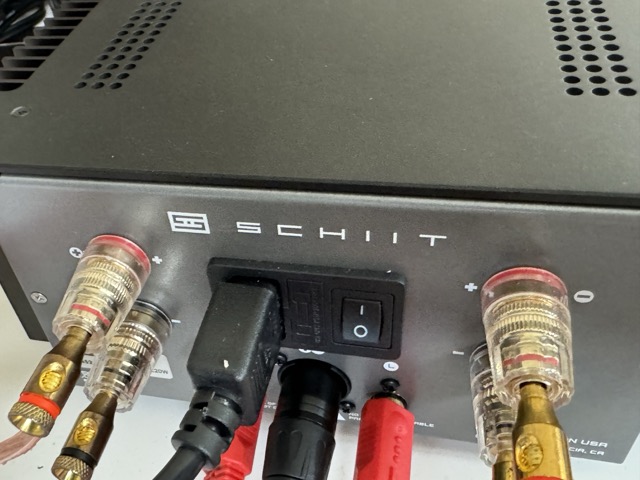
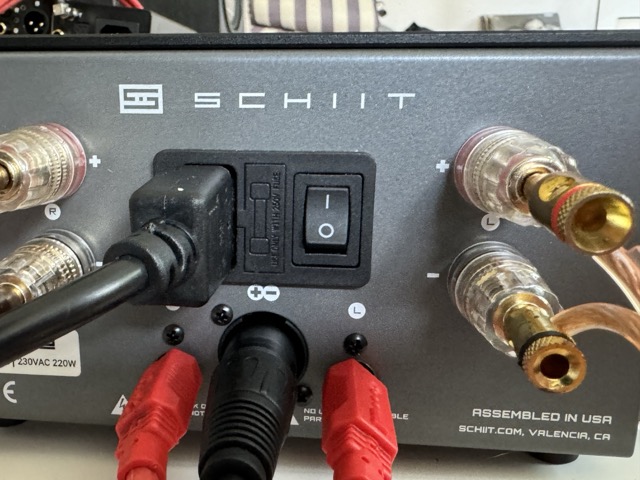
Internals
OK, now lets get into the internals:
 I was especially impressed with the high quality components used and the sheer size of the Toroidal Transformer.
Toroidal transformers are known for their efficiency and low electromagnetic interference.
I was especially impressed with the high quality components used and the sheer size of the Toroidal Transformer.
Toroidal transformers are known for their efficiency and low electromagnetic interference.
Deep Dive into Technologies
There is a lot of clever technology under the hood of the Aegir 2 and since I was comparing the Class A with both a class AB and some class D amplifiers I thought I would share a quick background on the different Amplifier designs:
Class A Amplifier demystified
-
With Class A amplifiers
the output devices (transistors or tubes) are always conducting, even when there’s no audio signal, this minimizes any crossover distortion and ensures a very linear output. However, this continuous operation leads to low efficiency as a significant amount of power is dissipated as heat. They also use a significant amount of power keeping the amplifier ‘on’ all the time. -
With Class A/B amplifier
the audio signal is split between two devices in push-pull arrangement, each handling one half of the waveform. This significantly reduces the power wasted when compared to Class A, but can introduce slight crossover distortion at the point where the signal switches between devices. -
With Class D amplifiers
Operate by switching the output devices on and off rapidly, using pulse-width modulation to create a waveform that approximates the audio signal. This method is extremely efficient, often achieving efficiencies over 90%, and generates less heat. However, the switching can introduce noise and distortion, typically at higher frequencies, which might require complex filtering to achieve high-fidelity audio reproduction. This is why PFFB technology is now being used to try to fix some of these issues.
I thought this little diagram was a good illustration of the differences:

With Class A - the waveform is always represented. With Class A/B there is a ‘battle’ to control the biases as it switches from A to B and finally with Class D the wave form is simulated with fast pulses (it like a ‘morse coded’ waveform ).
Class A is therefore cleanest and represents the ‘pure’ wareforum and therefore best sounding and if you can control the efficencies of the device and reduce its power consumption you can have the perfect amplifier and that is pretty much what Schiit are trying to do with the Aegir 2.
Let’s look at 3 of the key features inside the Aegir 2:
Halo Topology
The Halo topology is the feedback circuit that debuted in the excellent Schiit Midgard headphone amplfier. The consensus was that it was difficult to measure but sounded great and that the technology would work even better on speakers where there are large ‘swings in impedance’ across the frequency range. So it’s great to see Schiit now include the same technology on this amplifier. It basically integrates the speaker into the gain stage of the amplifier via feedback. This interaction should allow for an improved control over speaker motion, potentially enhancing stabilizing the speaker’s movement, thus reducing distortion and therefore improving sound clarity.
While a totally different technology it does remind me a little of the PFFB (Post Filter Feedback) technology being implemented by some recent Class D manufactures to control the varying frequency response and lower distortion on class D amplifier using feedback. I actually compared the sound quality against a PFFB enabled class D as you will see later on.
I think it’s great for the audio industry to see companies try new technology and push the boundaries of what is possible and especially using this technology in such a relatively cheap power amplifier.
Schiit’s Updated Continuity Technology
One little secret of the Schiit Aegir design (and updated in the Aegir 2) is that they try and keep the Aegir running in Class A mode but if required will switch to Class AB - it has a special type of hybrid design. As I mentioned earlier I do like when an audio company tries something not tried by other manufacturers and this continuity technology (like the Halo above) is another example of that ‘Think Different’ attitude.
Continuity is Schiit’s proprietary technology designed to address the trans-conductance droop common in traditional amplifier AB designs in a crossover beyond their Class A operation range. The updated version employed in the Aegir 2 uses both NPN and PNP devices on all rails, enhancing efficiency and power output while maintaining a cooler operational temperature. This innovation ensures a more consistent delivery of audio performance across various volumes and demands.
Reduce power consumption
There are a few other technologies included in the Aegir 2 design including the ability to go into standby easily to save power and reduce heat when not being used. I measured the power supply when in standby about 5W, and it was actually less than the standby power requirement of the Class D amplifier I compared it to in the AB testing (5.4W). Also, even after hours of playback, while the amplifier felt warm to the touch it was never too warm. You will not be able to use the Aegir 2 as an extra heater during the winter.
The key takeaway is that in providing the best audio quality using Class A technology Schiit have been cleverly including technologies which improved the audio quality while also reducing the typical issues of a Class A design.
Sound Impressions
For the past month I have used the Aegir 2 in two separate setups within my house. It replaced my Denon Atmos Receiver in main listening driving my Kef LS50 Meta’s but when I decided to do extensive AB testing I switched the Aegir 2 to my much larger converted garage space, where I have room to test multiple amplifiers and a few different speakers including Polk ES20 and Q Accoustics 3030i with the Aegir 2.
But before getting into the measurements here are my subjective listening impressions, mainly from the time it was setup with the LS50 Meta’s:
“Keith Don’t Go” by Nils Lofgren (Acoustic Live):
I used this track to test an amplifier’s ability to reproduce the dynamic strumming of an acoustic guitar and the crispness of live vocals. The Aegir 2’s neutral profile preserved the raw energy and detail of the performance, providing a clear separation of the guitar strings and vocal nuances without adding any coloration. It sounded great.
“Bird on a Wire” by Jennifer Warnes (Famous Blue Raincoat):
This song features deep bass lines and complex vocal layers, making it a good test for an amplifier’s low-frequency response and midrange clarity. The Aegir 2’s solid-state design provided a tight bass control and maintain the clarity and richness of Warnes’ vocals, reflecting the amplifier’s ability to handle subtleties in a neutral and unaltered manner.
“Hotel California” by the Eagles (Hell Freezes Over):
This famous live recording’s spacious soundstage and intricate guitar solos, was an absolute joy to listen too on the Aegir 2. The Aegir 2 excelled in portraying the expansive soundstage and detailed instrumental separation, allowing me to pinpoint the position of each instrument accurately in a beautifully rendered 3D space.
“No Sanctuary Here” by Chris Jones (Roadhouses & Automobiles):
This track features a deep, resonant bass line and smooth vocal delivery, this track can challenge most amplifiers handling of rhythm and pace it is especially good to tell teh difference between Class A and Class D amplifiers. The Aegir 2 would likely demonstrate its prowess in delivering a balanced output that captures the bass depth while ensuring that vocals remain distinct and forward.
Each of these tracks over many repeated listens provided a thorough test of the Aegir 2’s capabilities, highlighting its strengths in delivering a faithful, uncolored representation of music. Such a neutral sound signature ensures that all genres are rendered with fidelity, making the Aegir 2 a versatile choice for diverse musical tastes.
At no point in either listening space did I feel that the Aegir 2 was ‘underpowered’ there was always headroom for the deepest bass without any sense of distortion. And this was with a single Aegir 2, with 2 setup as monoblocks you will get even more power. The upgrade power delivery from the original Aegir of 20W into 8 Ohms to Aegir 2 with 30W was well worth it.
Some comparitive listening Tests
In my larger space, I setup a Fosi Audio LC30 Ampfliier / Speaker switcher to switch around the different combinations trying various different configurations of Class A, Class AB and Class D. Here is the LC30 with the Aegir 2 on the left and a pair of Fosi V3 Mono blocks on the right with some Polk ES20s (there are also a pair of 3030i just outside this picture):

While I did some stereo comparisons ( especially when I tested my Denon amplifier which only support RCA inputs ) I did switch over to a single speaker and did extensive comparisons between amplifiers using their XLR input (so that I was using the best possible input into the Aegir 2).
While I found that the Fosi Audio V3 Mono’s beat the Denon class AB, ultimately my conclusion was that the Aegir 2 was still slightly ahead of the V3 Mono which I thought was extra bright in some tracks and as you will see in some this holds up with the measurements.
But in fairness, the PFFB enabled Class D V3 Mono was pretty close only the very subtle differences in the tonality that made me favour the Aegir 2. So subjectively, if you want that absolutely accurate music reproduction a Class A is still hard to beat.
Note: Also, due to the nature of the Halo Topology which would normally involve the speaker in a feedback loop having the Fosi Audio ‘switcher’ between the Aegir 2 and the speakers meant this was not activated or would not be utilised as designed. I believe slightly affected the outcome. With the Halo Topology enabled again and with the LC30 switcher removed, I subjectively felt the Aegir 2 had an even more accurate cleaner sound, but it was very subtle and could easily have been some sighted biases.
Measurements
So, with my AB setup, using XLR outputs from the SMSL D300 DAC and a single speaker, I decided to measure some distortion and frequency responses from the various combinations from a single seated position. Some of these measurements where with the LC30 Amplifier switcher, this is because with the LC30 nothing was touched between the measurements, but subsequenly with the Aegir 2 connected directly to the speaker (so with the Halo Topology activated between the speaker and the Aegir 2) I decided to measure the audio frequency response and distortion detected from my listening position.
The level matched frequency response where very close but this was a typical comparison from 5K - 20K:
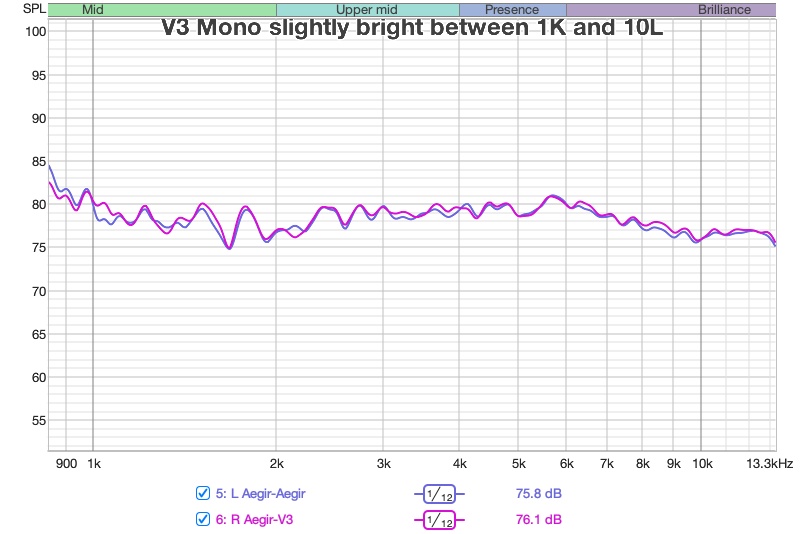
This and my subjective impressions led to be investigate why these subtle difference still exist (after all the V3
Mono uses some of the more advanced Class D amplifier technology e.g. PFFB) and I spotted this measurement again
from Amir over at AudioScienceReview:
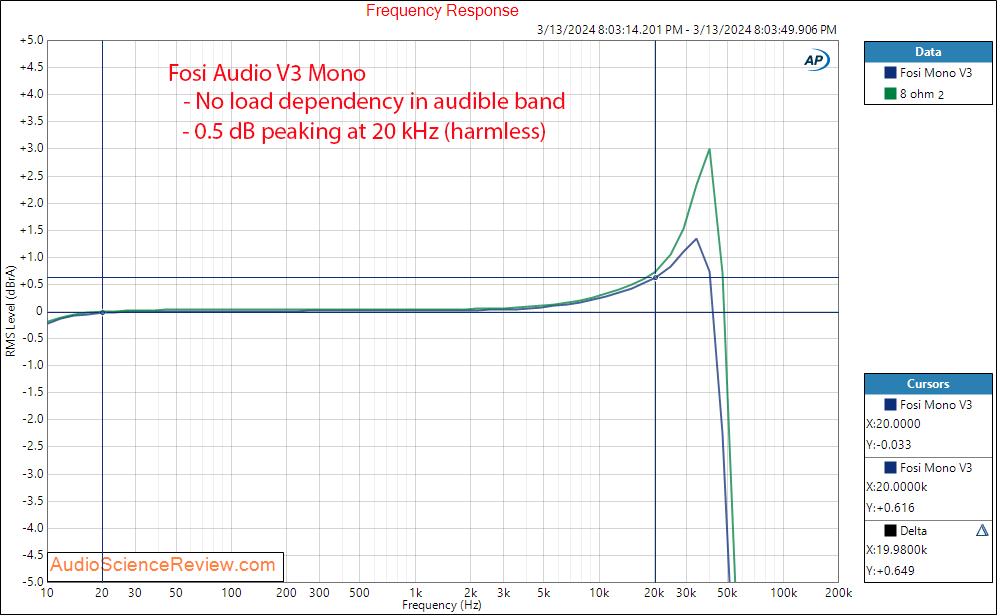
While this significantly better than previous ‘cheaper’ Class D amplifiers, it still shows
this
slight rise actually gets amplified in Class D amplifier by the speaker ‘magnitude impedance’ so checking my Polk
ES20 used for this measurement you can see a clear peak (in Red) between 1K and 2K so zooming into that area of my
measurements you can clearly see the V3 is slightly brighter in that area:

Zooming into that area there is a clear difference of between 0.5dB and 1dB in this area:

In conclusion, Class A totally neutral response is still better than a Class D. Though these differences were subtle but real so while I feel the class D amplifiers are getting closer there is still nothing to beat a class A amplifier for super accurate music reproduction.
Distortion Measurements
I also measured difference in distortion between these amplifiers, again these measurements on show subtle differences but in the case of the Aegir 2 I do believe the slight improvement in distortion maybe due to the Halo Topology it is probably too subtle and there are too many variables including the speaker in the room into distortion measurements to be conclusive. But here are 2 different measurements:
V3 in room istortion:

Aegir 2 in room distortion:
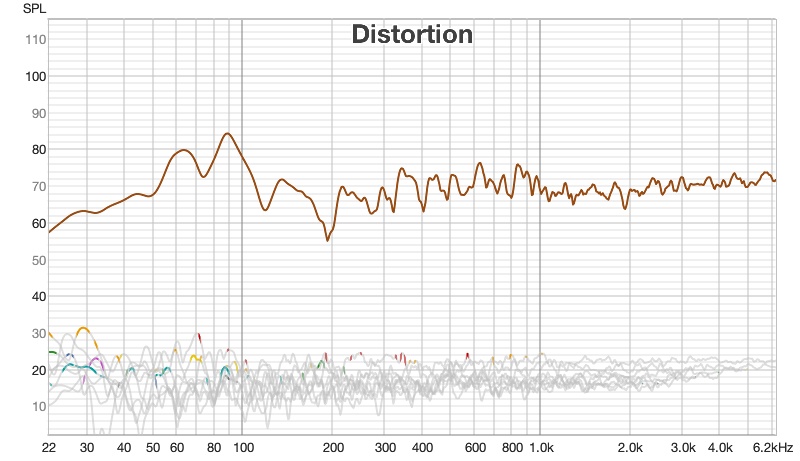
The slightly less distortion may have been because of the Halo Topology stablizing the Polk ES20 ‘Woofer’ motion during this test and therefore reducing those distotion peaks.
Rating
I have given the Aegir 2 a pragmatic rating of 4 stars. It is undoubtable a fantastic sounding amplifier with some incredible interesting and innovative features, but it is still relatively expensive at $800 for a single amplifier (and therefore $1600 if you want to run 2 as monoblocks) with 30W output, but I hope I have shown that Class A is still the best amplifier technology, and it is up to the reader whether its worth this price.
Conclusion
The Schiit Aegir 2 stands out not only for its technological advancements but also for its commitment to high-quality audio at a conservative price point. With features derived from higher-end models like the Tyr and most notable the Halo Topology from the Midgard, the Aegir 2 offers a compelling option for audiophiles who seek top-tier performance without the typical financial outlay associated with such quality. It embodies a well-rounded mix of innovation, performance, and value, making it a significant contender in the current amplifier market and a worthy successor to its well-regarded predecessor.